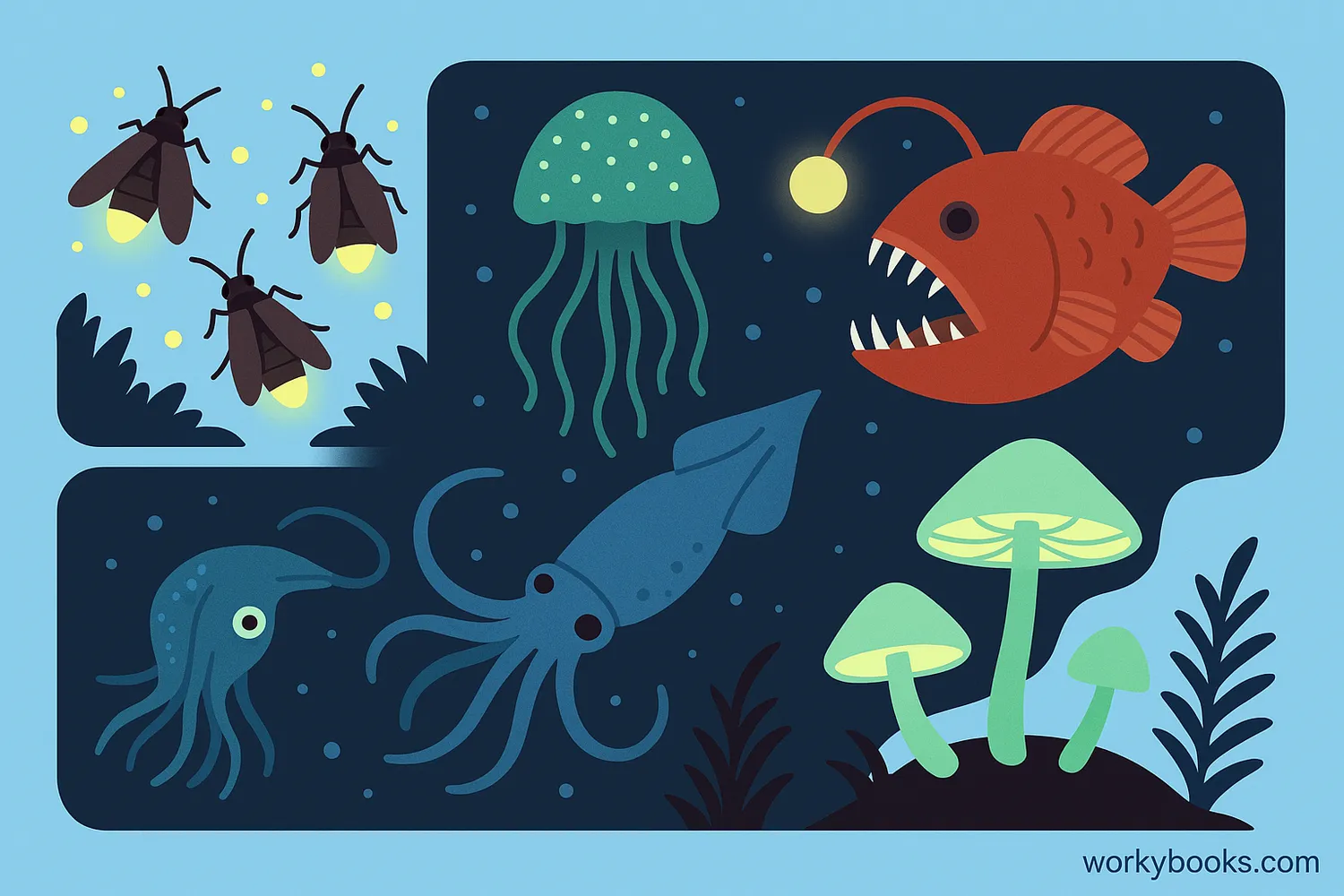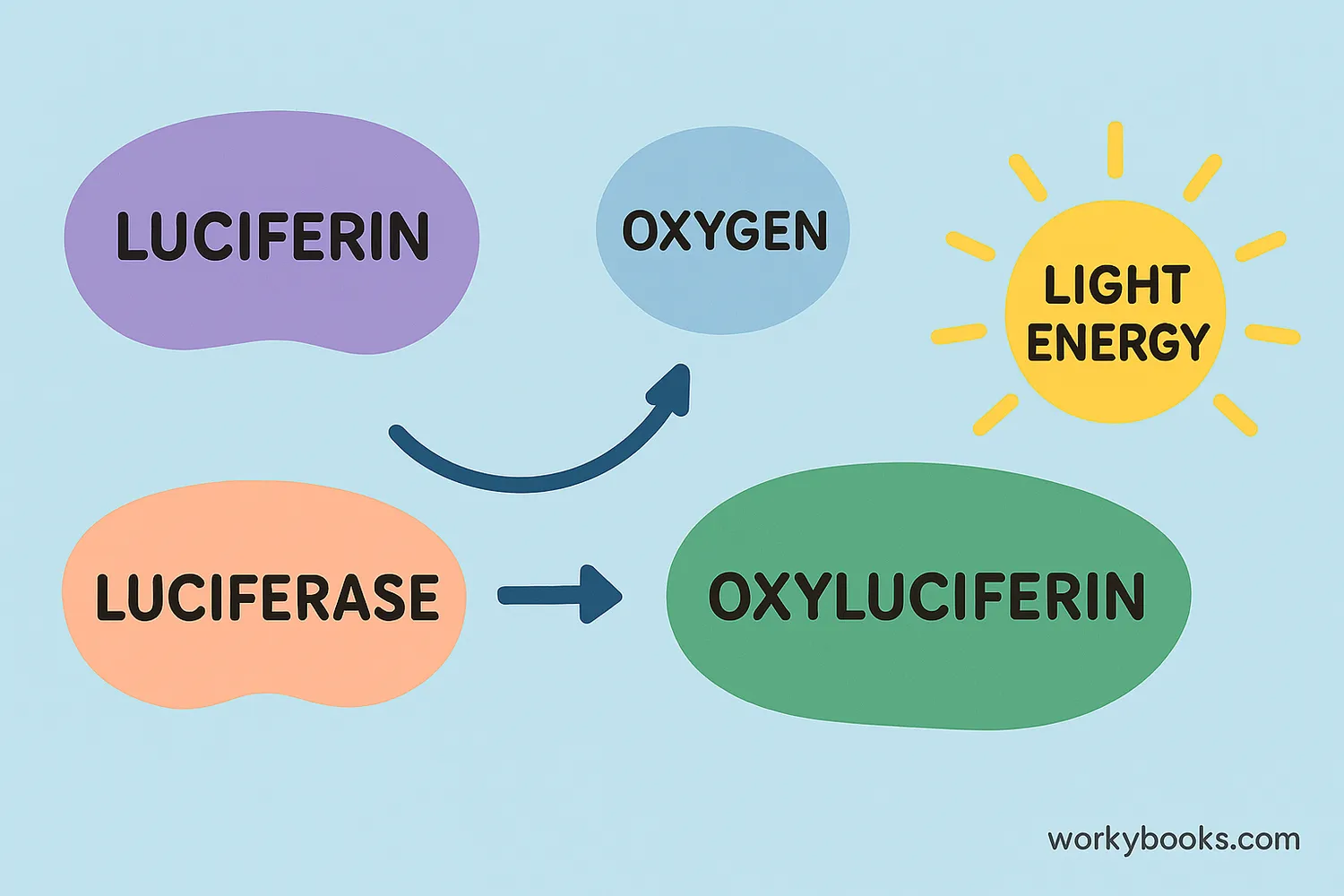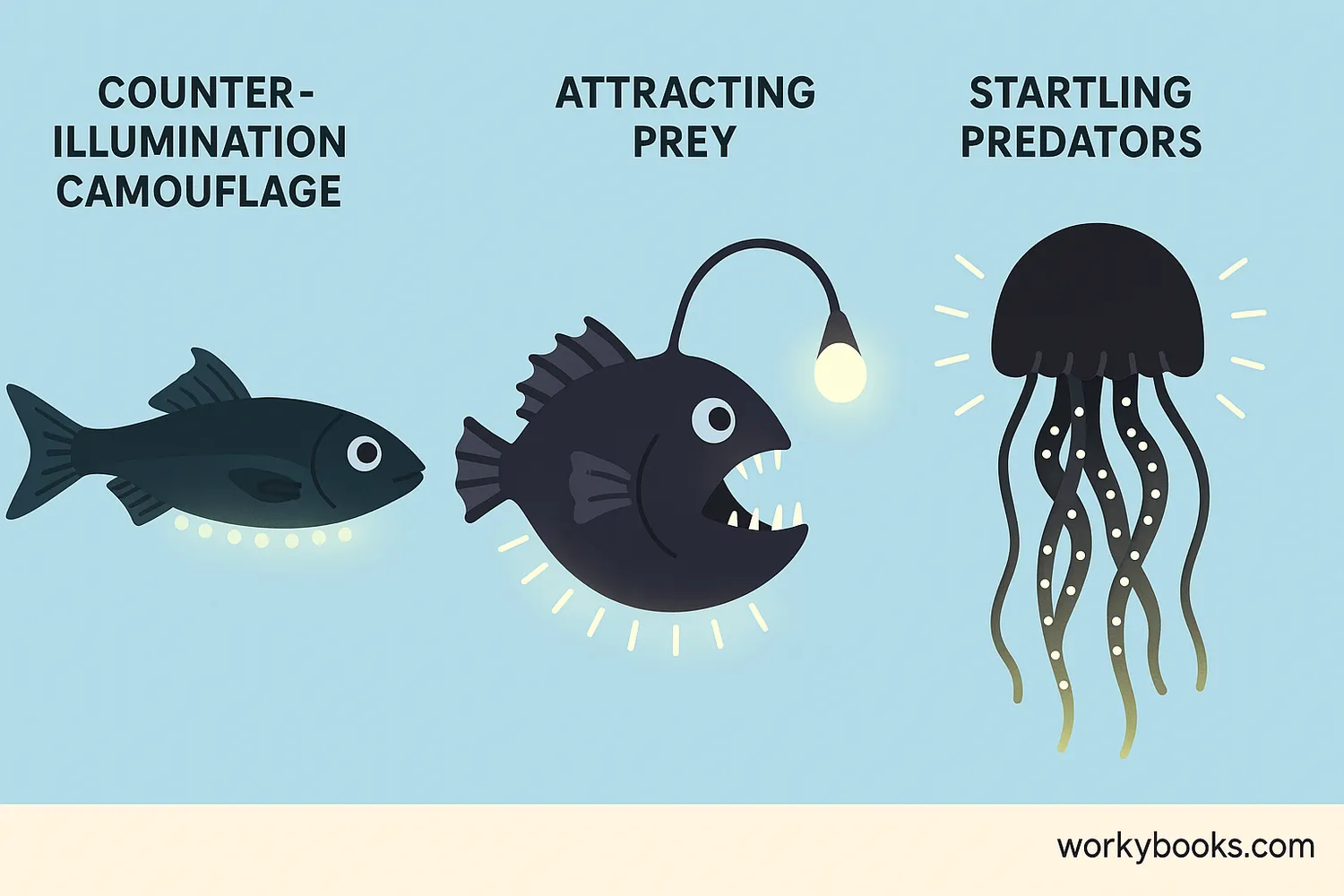Bioluminescence - Definition, Examples, Quiz, FAQ, Trivia
Discover how living things create their own natural light!
What is Bioluminescence?

Bioluminescence is the amazing natural ability of living things to produce and emit light! It's a form of chemical light created through special biochemical reactions inside organisms.
Think of it as nature's own living night lights! Many different creatures can create this magical glow, from tiny ocean plankton to fireflies in your backyard. The light is created when special chemicals inside these organisms mix together and react.
The word "bioluminescence" comes from "bio" meaning life and "lumen" meaning light - so it literally means "living light"!
Light Fact!
About 76% of marine animals are bioluminescent - that's most ocean creatures!
How Bioluminescence Works

Bioluminescence happens through a special chemical reaction inside organisms. The two main chemicals involved are called luciferin and luciferase.
Here's how this amazing light-making process works:
Luciferin
The light-producing molecule (the fuel)
Luciferase
The enzyme that speeds up the reaction
Oxygen
Combines with luciferin to create light
Light Production
Energy is released as visible light
Color Variations
Different organisms produce different colors
The special thing about this reaction is that it produces cold light - almost all the energy becomes light with very little heat. This makes it much more efficient than a light bulb!
Different organisms can produce different colors of light - blue and green are most common in the ocean, while fireflies produce yellow-green light.
Efficiency Champion!
Bioluminescence is nearly 100% efficient at converting energy to light, while light bulbs are only about 10% efficient (90% of their energy becomes heat)!
Why Bioluminescence is Important

Bioluminescence serves many important purposes in nature. Organisms use their natural light in fascinating ways:
Defense
Some squid release glowing ink to confuse predators
Attraction
Anglerfish use light lures to attract prey in the dark
Communication
Fireflies use specific flash patterns to find mates
Camouflage
Some fish match downwelling light to hide from predators below
Bioluminescence is also important for humans! Scientists study it to:
• Develop new medical imaging techniques
• Create biological sensors that light up when they detect diseases
• Study ocean ecosystems without disturbing them with artificial light
• Develop more efficient lighting technologies
Researchers even use bioluminescent genes from jellyfish to make other organisms glow, helping them study how genes work!
Bioluminescence Quiz
Test your bioluminescence knowledge with this quiz! Answer all 5 questions to see how much you've learned.
Frequently Asked Questions
Here are answers to some common questions about bioluminescence:
Fun Bioluminescence Trivia
Discover some amazing facts about bioluminescence!
Ancient Discovery
The first written records of bioluminescence date back to ancient Greece! Aristotle described glowing light from dead fish and decaying wood around 382 B.C.
Deep Sea Dominance
In the deep ocean where sunlight doesn't reach, about 90% of animals are bioluminescent. It's the primary source of light in the deepest parts of the ocean!
Nobel Prize Connection
The green fluorescent protein (GFP) from bioluminescent jellyfish earned scientists the 2008 Nobel Prize in Chemistry. It's now used worldwide in medical research!
Glowing Waters
Sometimes ocean waters glow at night from billions of dinoflagellates (tiny plankton). When disturbed, they create spectacular blue light shows in the waves!


